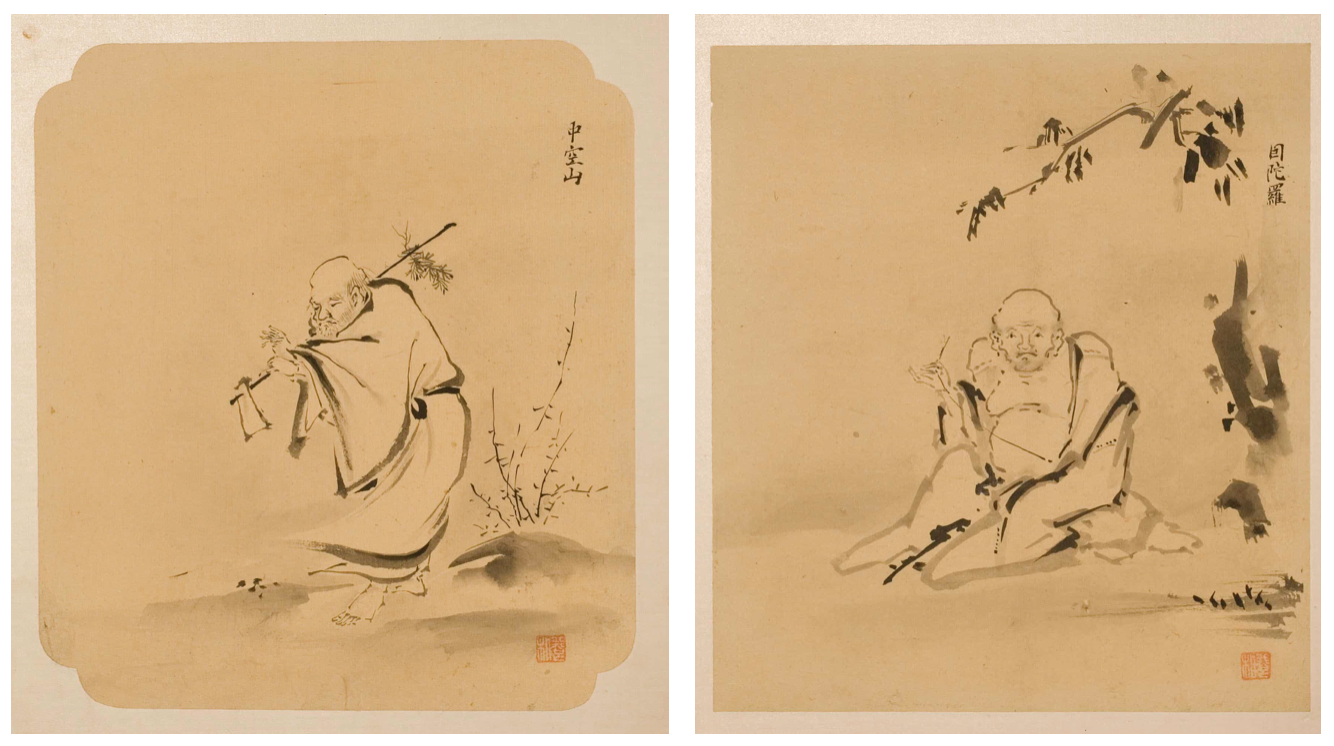The Fralin Museum of Art’s Upcoming Exhibition Chronicles the Spread of Buddhism Across Asia
Earthly Exemplars showcases art that illustrated the lineage of the faith from the 17th through 19th centuries

Kano Tsunenobu
Japan, ca. 1695
Ink and color on silk and paper
Anonymous Gift, 1975.11
Fralin Museum of Art at the University of Virginia
CHARLOTTESVILLE, Va. – As different traditions of Buddhism spread across Asia in tandem with evolving political dynamics from the 17th through the 19th centuries, art of Buddhist luminaries played a pivotal role. In Earthly Exemplars: The Art of Buddhist Disciples and Teachers in Asia, The Fralin Museum of Art at the University of Virginia will exhibit works that facilitated the faith’s constant transmission across the continent from one teacher to the next, creating local versions of sacred history. The exhibition, on view Aug. 27, 2022-March 19, 2023, is drawn primarily from The Fralin’s permanent collection and will include objects that trace the dissemination of the religion through Tibet, Qing China (1644-1911) and Edo Japan (1603-1867), along with earlier works that exemplify the tradition and lineage.
“Art was often the vehicle through which people in Asia became acquainted with the lineages of Buddhism that traced its origin back to India,” said Clara Ma, the Barringer-Lindner curatorial fellow and curator of this exhibition. “Earthly Exemplars brings together a collection of sculpted and painted imagery of arhats and teachers from East Asia and the Himalayas that offer insight into new ways followers connected with Buddha’s teachings through art.”
In their travels, Buddhists often carried paintings of teachers and arhats, who were subjects of worship because of their ability to allow followers of the faith to engage with Buddha’s teachings directly after his death. These images circulated through trade, migration and diplomatic exchange, and were infused with new political and stylistic meanings as transnational contact in Asia increased.
Qing China maintained a diplomatic alliance with the Tibetan Buddhist prelates and commissioned Buddhist art projects that linked the court as part of a sacred genealogy. Monks in both regions produced paintings that presented incarnation lineage and offered biographical accounts of teachers and arhats. Inspired by both Tibetan and Chinese artistic traditions, these works were on view in monasteries and exchanged as gifts. In Japan, the samurai class practiced Zen Buddhism and revered religious practices and ink paintings that were introduced by the immigrant Chinese prelates. These ink paintings marked a transformation in the ways Japanese artists depicted enlightened individuals and how Buddhists perceived the lineage of their tradition.
Together, the works on view in Earthly Exemplars showcase how artists and followers of the faith cultivated spiritual authority through art over several centuries throughout Asia.
About the Fralin Museum of Art at the University of Virginia
Established in 1935, the University of Virginia Art Museum became the Fralin Museum of Art in 2012 in honor of a bequest of American art and service to the university by Cynthia and W. Heywood Fralin. The Museum maintains a collection of more than 13,000 works of art, including American and European painting, works on paper, and sculpture from the 15th through the 20th centuries; art from the ancient Mediterranean; Asian art; and Native and ancient American art. Housed in the historic Bayly Building near the Rotunda on the landmark UVA campus, the Fralin is dedicated to serving the widest possible audiences and engaging comprehensive visual education to enhance its visitors’ understanding of world cultures. Throughout the year, the Museum presents a diverse selection of exhibitions, programs, research and events that bring the university and broader community together.
For more information, visit http://uvafralinartmuseum.virginia.edu